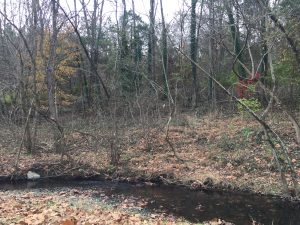 With few signs of movement or change in the woods, I turned my attention to the abundant bird calls that bombarded my sit spot. There are two birds nests within sight of my sit spot, both located high up in the boughs of two different sycamore trees. While I rarely see these birds, I often hear their voices if I’m at my sit spot in the morning. There was one bird in particular that I heard constantly – it made a series of squawking calls, followed by several low-pitched sounds. I could hear what sounded like two of these birds, one just south of my sit spot and the other farther away. Another bird emitted a rapid, high pitched twittering every few minutes. Occasionally, I heard other twittering bird calls that were more quiet and spaced apart. There must have been multiple bird species present, even though I didn’t see a single bird except a few crows. Directly to the south of my sit spot, I could hear a “scritching” noise, the source of which was a squirrel scraping off the outer shell of a nut with its teeth. Distracted by all the noise, it took me awhile to notice the quiet trickle of the creek underneath the riot of sound. When I started writing, some of these bird calls had sounded conspicuous and close to my sit spot. However, by the time I had finished recording my observations, the bird calls were noticeably quieter and rarer than before. While I was writing, I had missed the opportunity to continue observing the pattern of the birds’ calls before most of them moved away.
With few signs of movement or change in the woods, I turned my attention to the abundant bird calls that bombarded my sit spot. There are two birds nests within sight of my sit spot, both located high up in the boughs of two different sycamore trees. While I rarely see these birds, I often hear their voices if I’m at my sit spot in the morning. There was one bird in particular that I heard constantly – it made a series of squawking calls, followed by several low-pitched sounds. I could hear what sounded like two of these birds, one just south of my sit spot and the other farther away. Another bird emitted a rapid, high pitched twittering every few minutes. Occasionally, I heard other twittering bird calls that were more quiet and spaced apart. There must have been multiple bird species present, even though I didn’t see a single bird except a few crows. Directly to the south of my sit spot, I could hear a “scritching” noise, the source of which was a squirrel scraping off the outer shell of a nut with its teeth. Distracted by all the noise, it took me awhile to notice the quiet trickle of the creek underneath the riot of sound. When I started writing, some of these bird calls had sounded conspicuous and close to my sit spot. However, by the time I had finished recording my observations, the bird calls were noticeably quieter and rarer than before. While I was writing, I had missed the opportunity to continue observing the pattern of the birds’ calls before most of them moved away.
The berry plants I intended to follow are gone. The bush is missing all of its leaves, and it’s hard to locate its pale, bare branches against the drab woods. The tomatillo plants are still
present along the bank, but they appear more pale and brittle than before. The entire plant has turned a uniform pale yellow, like dried wheat, and the stems seem brittle and weakened. The plants appear reduced in size, as if they have lost some of their branches. While I could no longer follow my berry plants, I did notice a new type of berry plant, which had produced small, round berries clustered together on one long stem.
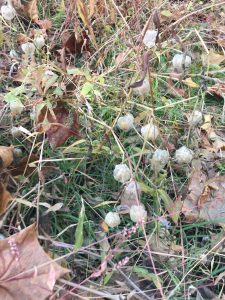
Last blog post
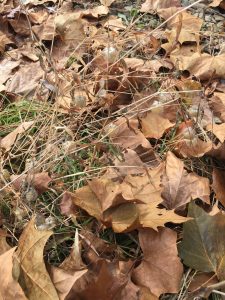
This morning
Closing my eyes, I first noticed that the bird calls were less frequent and sounded farther away. I heard a group of crows to the north of my sit spot, but I could not see them. After a few minutes their calls faded as they moved away. The scritching sound continued as the squirrel was still intent on breaking open the nut’s outer shell. With my eyes open, I listened to a bird that made a high-pitched twittering call, which I heard almost consistently for the entire five minutes. I also heard a new bird call, which sounded like a far-off squawk and then a drawn-out whistle – this pattern repeated several times. The drawn-out whistle reminded me of the way snoring is sometimes portrayed in cartoons. From the woods, I heard a dog bark several times and wondered if these woods border a neighborhood. That would explain some of the noises, such as the rooster and the dog barking. There were few differences in my two experiences because in both cases, I was only focusing on the sounds present in my surroundings. Since there was little movement to pay attention to, I found myself gazing off into the distance while I listened closely to the various bird calls.
I focused on a portion of the rocky stream bed, which afforded ample opportunities for observing rocks, macro invertebrates, leaf litter, and plant life. The stream bed had a mixture of dark and light gray rocks with various shapes and color patterns. Some of the rocks were almost rectangular, while others had been worn smooth and round by the stream. While most rocks were a monotone gray, others had swirls of taupe. I also noticed several small pebbles that were orange or brown, but these were rare. There were signs of decomposition in the leaves scattered across the stream bed, some of which were riddled with holes – evidence that macro invertebrates had been consuming the leaves. Plants had sprouted between the rocks, mainly grasses and weeds, and moss was present on several of the rocks. I also noticed several mussel shells, most of which were missing the bottom half of the shell, as well as several snail shells. I placed the shell on the palm of my hand and checked where the opening of the shell was located. Since it was on the right side of the shell, I identified it as a gilled snail. Using the same method for the rest of the snail shells, I identified them all as gilled snail shells.
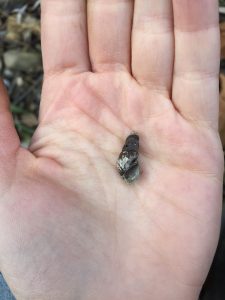
Gilled snail (opening on the right)
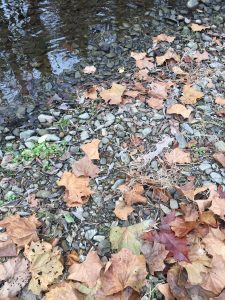
1 square m of habitat
Overall, I was surprised by the amount of activity I heard in my sit spot. While there were few signs of movement in the woods, by focusing on sound I was able to discern quite a few different animal species in my sit spot. This is the first time I have relied so heavily on sound to provide information for my blog post, and I found the experience enjoyable and relaxing. In my opinion, actively listening requires less concentration than watching for movement – so I was able to feel more relaxed this morning than in previous days, when I relied primarily on sight to gain insight about my surroundings. It was also interesting to focus on the various bird calls in my surroundings, which I hadn’t paid much attention to previously because I had been distracted by the other sights and sounds in my surroundings. With less visual and auditory stimulus to focus on, I turned my attention almost entirely to bird calls out of desperation, and it turned out to be an engaging pastime that provided new insights into my sit spot.

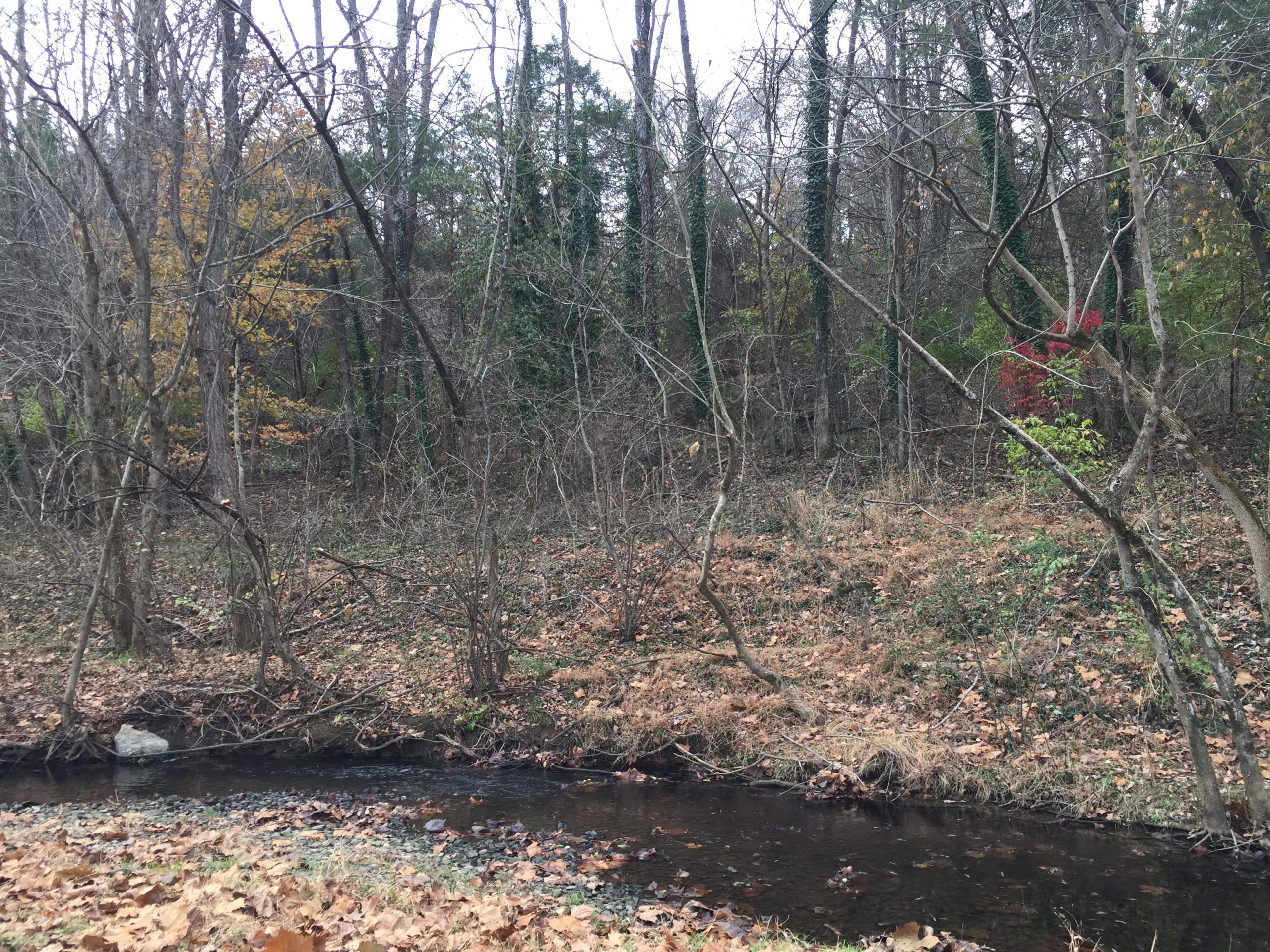
Your description of the rocks really painted a picture of your observed area. I hadn’t really thought about what macroinvertebrates eat, I suppose they could eat leaves.
I really like the language you used in your post and how inquisitive you were towards your environment!!
Your descriptions are fantastic. I chuckled when you called it a “riot of sound”. Super cool to see you using skills, such as identifying macro-invertebrates, in your blog posts!
Bombarding bird song and great detail on focus spot – good work!